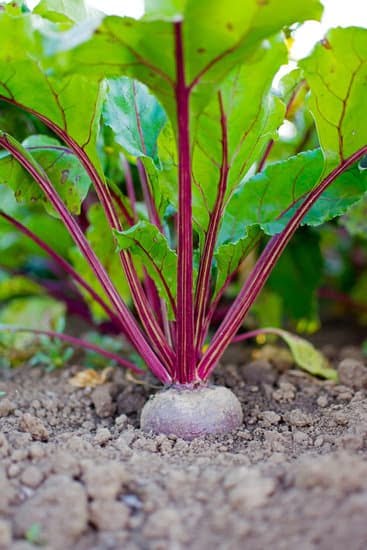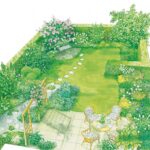Are you looking to infuse tranquility and beauty into your outdoor space? Small Japanese gardens can be the perfect solution, offering a peaceful retreat right in your own backyard.
In this article, we will explore the history and significance of Japanese gardens, essential elements for creating a small Japanese garden, incorporating Zen principles, suitable plants and trees, design tips for maximizing small spaces, incorporating water features, as well as maintenance and care. Whether you have a tiny patio or a compact backyard, there are plenty of inspiring ideas to help you create your very own small Japanese garden oasis at home.
Japanese gardens have a long and rich history dating back to the 8th century when they were first introduced in Japan. These gardens are designed to be harmonious and tranquil spaces that offer an escape from the chaos of everyday life. They often incorporate natural elements such as rock, water, and plants to create a sense of serenity and peace. By understanding the significance of these gardens, you can gain a deeper appreciation for their design and purpose.
When it comes to creating your own small Japanese garden, there are several essential elements to consider. From carefully selected plants and trees to strategically placed rocks and water features, every aspect plays a crucial role in achieving the desired aesthetic and atmosphere. By following some simple design principles and incorporating Zen philosophy into your garden space, you can transform even the smallest outdoor area into a peaceful sanctuary that reflects the beauty of traditional Japanese gardening.
The History and Significance of Japanese Gardens
Japanese gardens have a rich history dating back to ancient times, with their designs and elements rooted in deep cultural and spiritual significance. The art of Japanese gardening has been influenced by various factors including Shinto, Buddhist, and Taoist philosophies, as well as Chinese garden design principles. Historically, the purpose of Japanese gardens was to create a harmonious and peaceful space that reflected the beauty of nature and provided a place for meditation and contemplation.
Cultural Significance
Japanese gardens are deeply intertwined with the country’s culture and traditions. Traditionally, these serene spaces were designed to embody the idealized landscape of Japan – representing mountains, waterfalls, forests, and oceans in miniature form. They served as retreats for spiritual reflection as well as gathering places for social activities such as tea ceremonies. The design elements and symbolism found in Japanese gardens reflect important aspects of Japanese culture such as respect for nature, simplicity, and tranquility.
Historical Evolution
The history of Japanese gardens can be traced back to the Asuka period (592-710) when Buddhism was introduced to Japan from China. Garden designs evolved alongside the development of new architectural styles and religious beliefs. Over time, different types of gardens emerged including dry rock gardens (kare-sansui), stroll gardens (kaiyū-shiki teien), and tea gardens (cha-niwa). Each type reflected different aspects of Japanese aesthetics and philosophy.
As small Japanese gardens continue to gain popularity around the world, it is important to recognize their historical origins and significance in order to create authentic and meaningful spaces that capture the essence of traditional Japanese gardening. Understanding the historical evolution of these gardens can provide inspiration for creating small Japanese garden designs that are both beautiful and culturally respectful.
Essential Elements for Creating a Small Japanese Garden
Creating a small Japanese garden is a perfect way to bring tranquility and natural beauty to your home. The essential elements of a traditional Japanese garden can be incorporated into smaller spaces, allowing you to enjoy the timeless charm and serenity of these gardens in your own backyard or patio.
Balance and Harmony
One of the essential elements of a small Japanese garden is achieving balance and harmony in the design. This can be done by carefully selecting and arranging elements such as rocks, gravel, plants, and water features to create a sense of equilibrium and tranquility.
Rock and Gravel Arrangements
Rocks and gravel are commonly used in Japanese gardens to represent mountains, rivers, or lakes. In a small Japanese garden, carefully placing rocks of different sizes and shapes amidst raked gravel or sand can create a serene landscape that evokes a sense of peacefulness.
Pruned Trees and Shrubs
Incorporating pruned trees and shrubs into your small Japanese garden is crucial for creating an authentic look. Trees such as bonsai, maple, cherry blossom, or pine can add depth and character to the space while symbolizing longevity, resilience, and beauty – all important aspects of traditional Japanese gardens.
By incorporating these essential elements into your small Japanese garden design, you can create a tranquil outdoor space that reflects the timeless beauty and harmony associated with traditional Japanese gardening practices. Whether you have just a few square feet or a larger area to work with, there are endless possibilities for creating your own peaceful oasis inspired by the artistry of Japan’s iconic landscapes.
Incorporating Zen Principles in Small Japanese Gardens
When creating a small Japanese garden, it is essential to understand and incorporate Zen principles to achieve an authentic and tranquil space. Zen principles focus on simplicity, naturalness, and the appreciation of the present moment, which are key elements of traditional Japanese gardens. One way to incorporate these principles is by using minimalism in design, which emphasizes open space and simplicity. This can be achieved by using clean lines, uncluttered spaces, and a restrained color palette.
Another important aspect of Zen principles in small Japanese gardens is the concept of “wabi-sabi,” which embraces imperfection and transience. This can be reflected in the use of weathered materials, such as moss-covered stones or aged wood, to create a sense of timelessness and harmony with nature. Additionally, incorporating asymmetry in the garden design can add a sense of natural beauty and evoke a feeling of peacefulness.
In terms of landscaping, creating a small Japanese garden with Zen principles involves carefully selecting and placing elements such as rocks, gravel, and plants to create a harmonious balance. Rocks are often used to symbolize mountains or islands within the garden landscape, while gravel or sand can represent flowing water or ripples in a pond. By carefully arranging these elements, you can evoke a sense of serenity and contemplation within your small Japanese garden.
| Zen Principles | Incorporation |
|---|---|
| Minimalism | Use clean lines and uncluttered spaces |
| Wabi-sabi | Embrace imperfection with weathered materials |
| Landscaping | Carefully arrange rocks, gravel, and plants for balance |
Types of Plants and Trees Suitable for Small Japanese Gardens
Japanese gardens are known for their carefully curated selection of plants and trees, chosen to create a serene and harmonious environment. When creating a small Japanese garden, it’s essential to select the right plants and trees that will thrive in the limited space while still embodying the principles of Japanese gardening.
A key element in small Japanese gardens is the use of evergreen plants such as Japanese maple, bamboo, azaleas, and moss. These plants provide year-round interest and maintain the garden’s beauty even in winter. Additionally, using plants with varying textures and colors adds visual appeal to the small space. For example, incorporating gravel or other groundcovers around these plants can create contrast that highlights their unique features.
When it comes to trees suitable for small Japanese gardens, consider adding a dwarf pine tree or a bonsai tree. These smaller versions of traditional Japanese trees still encapsulate the essence of nature in a compact form. Another popular choice is the Japanese black pine, which adds an elegant touch and is often pruned to resemble ancient trees found in natural landscapes.
In addition to these essential elements, you can also incorporate traditional Japanese garden features such as stone lanterns, bamboo fences, or wooden bridges to complement your plant and tree selections.
| Plants | Trees |
|---|---|
| Japanese Maple | Dwarf Pine Tree |
| Bamboo | Bonsai Tree |
| Azaleas | Japanese Black Pine |
| Moss |
Design Tips for Maximizing Small Spaces in Japanese Gardening
Creating a small Japanese garden can be a challenging yet rewarding endeavor, especially when space is limited. However, with the right design tips and techniques, you can maximize even the smallest outdoor area to create a serene and beautiful Japanese-inspired space.
One key design tip for maximizing small spaces in Japanese gardening is to focus on simplicity and minimalism. Avoid cluttering the space with too many elements or decorations. Instead, opt for clean lines, simple plant arrangements, and carefully selected focal points such as a stone lantern or small water feature. This will create a sense of tranquility and spaciousness within the limited area.
Another important consideration is to utilize vertical space in your small Japanese garden. Look for opportunities to add height through trellises, bamboo screens, or tall plants such as bamboo or ornamental grasses. This not only adds visual interest but also creates the illusion of depth and expansiveness in the confined space.
Additionally, consider incorporating versatile furniture pieces that can serve dual purposes, such as a bench with built-in storage or a foldable table that can be tucked away when not in use. This will allow you to make the most of the available space while still creating an inviting and functional outdoor retreat.
By implementing these design tips, you can transform even the tiniest of outdoor areas into a peaceful and harmonious small Japanese garden that reflects traditional principles while making effective use of limited space.
How to Incorporate Water Features in Small Japanese Gardens
Incorporating water features in small Japanese gardens can add a sense of tranquility and serenity to the space. Whether it’s a small pond, a bubbling fountain, or a simple stone basin, water features are essential elements in traditional Japanese garden design. Here are some ideas on how to incorporate water features in small Japanese gardens:
1. Stone Basin (Tsukubai): A stone basin, known as a tsukubai, is a common water feature in Japanese gardens. It is usually placed near the entrance of the garden for visitors to purify themselves before entering. In a small Japanese garden, a simple stone basin with a bamboo ladle can serve as an elegant and functional water feature.
2. Bubbling Fountain: A small bubbling fountain can add a soothing sound of running water to the garden. Choose a compact fountain that fits well within the limited space of a small Japanese garden. The gentle flow of water can create a peaceful atmosphere, enhancing the overall ambiance of the space.
3. Miniature Pond: If space allows, consider adding a miniature pond as the focal point of the garden. A carefully designed pond with aquatic plants and ornamental fish can create a sense of harmony and balance within the confined area of a small Japanese garden.
In addition to these ideas, it’s important to ensure that any water feature included in your small Japanese garden aligns with Zen principles and complements the overall design aesthetic. By incorporating these water features thoughtfully, you can create a tranquil oasis within your own backyard that reflects the timeless beauty of traditional Japanese gardens.
Maintenance and Care for Small Japanese Gardens
Small Japanese gardens, also known as “tsubo-niwa”, are designed to be tranquil retreats that inspire feelings of peace and harmony. To maintain the serene beauty of your small Japanese garden, regular care and maintenance are essential. Here are some tips for ensuring the longevity and vitality of your miniature oasis:
- Pruning: Regular pruning is crucial for keeping your small Japanese garden looking its best. Trimming and shaping trees, shrubs, and plants will help maintain a tidy and well-kept appearance. It also allows for better air circulation and sunlight exposure.
- Weeding: Keeping on top of weed control is important in any garden, but it is especially vital in a small space where weeds can quickly take over. Regularly remove any unwanted plants to keep your garden looking neat and well-maintained.
- Watering: Proper watering is key to the health of your plants in a small Japanese garden. Different plants have different water needs, so be sure to research the specific requirements of each species in your garden.
In addition to these basic maintenance tasks, it’s important to regularly assess your small Japanese garden for any signs of pests or diseases. Promptly addressing any issues will help prevent them from spreading and causing damage to your plants. With proper care and attention, your small Japanese garden can continue to provide a peaceful escape for years to come.
10 Inspiring Small Japanese Garden Ideas to Try at Home
In conclusion, creating a small Japanese garden at home can be a fulfilling and rewarding experience. By understanding the rich history and significance of Japanese gardens, as well as incorporating essential elements and Zen principles, one can design a serene and peaceful outdoor space. When it comes to plants and trees, selecting the right ones that are suitable for small spaces is crucial for the success of the garden.
To maximize small spaces in Japanese gardening, design tips such as utilizing different levels, creating focal points, and incorporating natural materials can make a big difference. Additionally, water features like a mini pond or a simple water fountain can add tranquility to the garden. However, it’s important to keep in mind that maintenance and care are essential for keeping the small Japanese garden looking its best.
There are numerous inspiring small Japanese garden ideas to try at home, from minimalist rock gardens to vibrant moss gardens. Whether you have a small balcony or a tiny backyard, there are endless possibilities for creating your own little piece of Japan at home. With careful planning and attention to detail, anyone can bring the beauty and serenity of a traditional Japanese garden into their own space.
Frequently Asked Questions
What Are the 3 Essential Elements of a Japanese Garden?
The three essential elements of a Japanese garden are rocks, water, and plants. Rocks represent mountains or islands, water symbolizes purity and renewal, while carefully curated plants add beauty and tranquility to the overall landscape.
How Do You Make a Mini Japanese Garden?
To make a mini Japanese garden, start by choosing a container with proper drainage. Then, add gravel or sand to create the base, strategically place rocks to mimic natural landscapes, incorporate miniature trees or bonsai plants, and consider adding small figurines or lanterns for decoration.
What Is the Smallest Japanese Garden?
The smallest Japanese garden can be as tiny as a desktop Zen garden or even a small tray filled with sand and rocks for raking patterns. These mini gardens still capture the essence of larger traditional designs in a compact space.

Welcome to my gardening blog! I am passionate about plants and enjoy sharing my knowledge and experiences with others. In this blog, I will write about everything related to gardening, from tips on how to get started to updates on my own garden projects.





